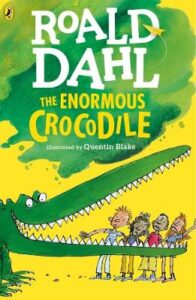Writing a children’s book is half the job. The other half, perhaps a more intimidating one, is publishing and promoting it.
Getting your story out into the world may seem like an overwhelming task. But trust us, if you’ve managed to write a children’s book, you’ll be able to get it on virtual or real bookshelves.
How exactly?
You have two approaches: traditional publishing and self-publishing. We’ll guide you through both so you can decide which suits you best.
As for the promotion of your published children’s book, it’s like in war and love — everything is fair. Well, mostly. Read along, to learn more.
Preparing Children’s Book for Publishing
Literature for children is tricky to get right. You have to consider differences between the ages of the target audience, ensure a strong moral core to the story, and make it entertaining.
To maximize your chances of successful publishing (traditional or indie), your book should be up to the standards.
So.
You need to define your target readers. There’s a huge difference between a kid aged 6 and a kid aged 10. Even more so between a kid aged 10 and a kid aged 14. Depending on the age, the number of words, prose complexity, ideas, themes, and illustrations will differ.






Determining your target readers is beneficial whether you have a manuscript or plan on starting one. In the first case, you’ll edit better. In the second, you’ll write with your target audience in mind.
Afterward, when the manuscript is written or edited, you can put it to the final trial. Give the story to kids or parents to read and comment on. While kids won’t always give you constructive criticism, their likes/don’t likes and whys can be invaluable.
If you don’t have relevant acquaintances, you can ask around on forums, Facebook groups, and social media.
How to Publish Children’s Books Traditionally?
So, you’ve ensured that your story for kids is as good as you can make it. And you have your eyes on the main prize — traditional publishing.
What’s next?
Welcome to the ultimate traditional publishing challenge — getting your book noticed.
You have two ways of approaching the challenge.
1. Submit to publisher that accepts ‘agentless’ writers
Some publishers, Holiday House, for example, accept manuscripts directly from authors. Find them, review their requirements and see whether your book fits, send your manuscript, and wait.


You can check some of the children’s book publishers here.
But, be prepared that
- You’re not guaranteed to receive the answer, either positive or negative.
- You have to wait long, often up to half a year.
If writing directly to publishers isn’t exactly your forte, and you want someone with a bit more authority to represent you…
2. Find an agent who works with children’s books
Working with agents is a prevalent practice in the world of literature. So, find agents that deal with children’s books and get their attention.
It all comes down to writing a proper query letter. Agents are busy people, and they value brevity and the fact that you value their time. So our advice — be laconic and straight to the point. No need for lengthy backstories or emotional confessions (unless you’re sure it will benefit you).
Craft a query letter that shows
- For whom you’ve written your book (showing that you know the market and your audience can be a big plus)
- What you’ve written and how it’s unique (try to find other books the agent represents, and see how yours compares and what makes it different)
- How the manuscript is relevant to the particular agent.
If the agent accepts your manuscript, then they have to sell it to a publisher. So, again — more waiting.
In the end, whether you choose agents or write directly to publishers, it all comes down to trying and waiting. Trying and waiting. Sometimes, you’ll get lucky, and the positive answer will come your way soon. Sometimes, the process will be a true exercise of perseverance, stubbornness, and morale.
If you succeed, you’ll get the prestige and some convenience of being a traditionally published author. At the same time, you won’t have much say about some creative choices (book cover design, illustrations, format).
If waiting is something you don’t want or can’t afford, and you want maximum freedom, — go self-publishing.
How to Self-Publish a Children’s Book?
It’s quite straightforward, choose a platform that supports self-publishing, such as KDP, and publish there. The publishing takes a few clicks. Yet the preparation of the manuscript will take plenty of time and some investments. Here’s a comprehensive article that leads you through the nuances of self-publishing and the budgets involved.
Overall, self-publishing involves less waiting and stressing over whether the right people will get your book. At the same time, everything is on you, from editing to a book cover.


How to Promote a Children’s Book?
But, whether you choose self-publishing or traditional publishing, you still need to market the children’s book. The publishing house won’t invest much in marketing of a beginner author.
What can you do to promote a children’s bookt?
Market a children’s book to adults
Adults, parents, relatives, and parents’ friends buy up to 60% of books for kids. Direct your marketing efforts at them.
What children’s books are adults looking for? Well, it may differ, but we can assume that on average, they want a book that
- teaches a nice lesson
- is engaging
- beautifully executed
- has an age-appropriate prose
A book that manages to communicate it all clearly and quickly is a more successful book.
So, your book should wear its heart on its sleeve, or rather cover.
Get an eye-catchy book cover
A book cover design is the first thing that catches the attention and gets across the theme of the book. A person should look at the cover and realize, “That’s the book I’m looking for.”
Here’s our advice for an effective children’s book cover:
- Illustrated cover is preferable as it has that sought-after hand-drawn vibe
- Ensure a well-readable font with a proper texture and stylization
- Choose bright/warm colors
- Ensure that a buyer can understand what the book is about by looking at a cover.
We have an article with great children’s book cover examples by age group. Check it out for a better understanding of the industry’s standards.
A nice book cover will help you sell more. Luckily, you don’t need to spend a fortune on an illustrated children’s book cover. You can have one for as low as $390.
Get first positive reviews
Social proof is essential to a product’s success. The more positive user reviews you’ll be able to get, the better. If you aren’t sure how to approach this task, we have an article for you.
Create a book trailer
Book trailers are a great tool for reaching an audience on YouTube or Facebook video feeds. Also, kids like videos as well as spending unhealthy amounts of time on YouTube (well, not only kids). So, a nice children’s book trailer is likely to get their attention and interest them enough so they’ll nag parents about it. And as you may know, when a kid truly wants something, it’s difficult to say no.
Consider YouTube channel
If your books are educational or you have stories you can share with kids, you can start a YouTube channel. Releasing small videos for kids to learn something new can be great for growing a personal brand. You can also film and upload any live events, such as school visits (if a school allows them).
Visit schools
It’s an introvert’s horror.
But, “school visits can be a wonderful way for a children’s author to connect with their readers, raise their profile, and make a bit of extra money.” At the same time, for the schools “is a great way to inspire children and bring reading to life.”
It’s a win-win situation. Some schools even allot budgets for such enterprises. You can make research of your own and determine whether your local schools conduct such events. If not, you can simply contact local schools and ask if they’d be interested. Given you have a beautiful, interesting book to talk about, teachers and principals will be happy to brighten students’ days in such a way.
We suggest reading this article on the dos and don’ts of school visits.
Donate to library
Donating a copy of your book to a library is a great free way of increasing your reach. Even if the donation won’t boost your sales, it’s still worth it. Your book in the right place and right time, may change someone’s life or brighten up the day.
Contact local stores
Some independent and chain stores accept books of the local authors. Maybe yours do as well. If so, it’s a great opportunity to put your book on shelves where dozens of eyes will see its colorful cover.
Live events
If you can hop on any live event to talk about your book, do it. Whether it’s an event for kids or parents, you’re in the win. If there aren’t any, think about organizing one yourself.
Merchandise
Cute merch with your book art can go a long way in promoting your works. Think about what works best for you — clothes, smartphone cases, cups, notebooks. You can sell it at local events, bring it to schools as gifts, donate to charities or bookstores.
Summing Up
Writing and publishing a children’s book is a challenging but ultimately rewarding task. The world needs more written stories for kids to enjoy so they have a refreshing breather from the digital world. Follow industry’s standards and best practices, and one day your book will bring a broad smile to a kid’s face.








